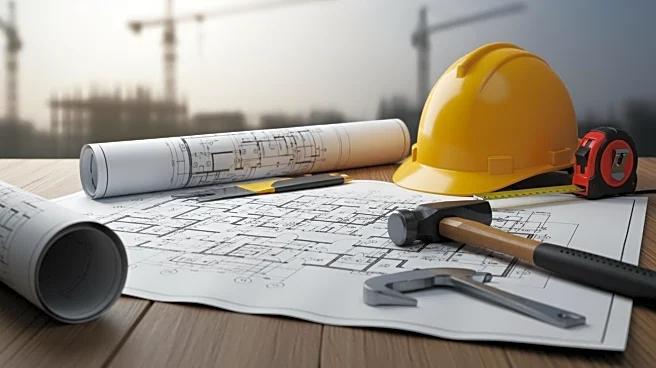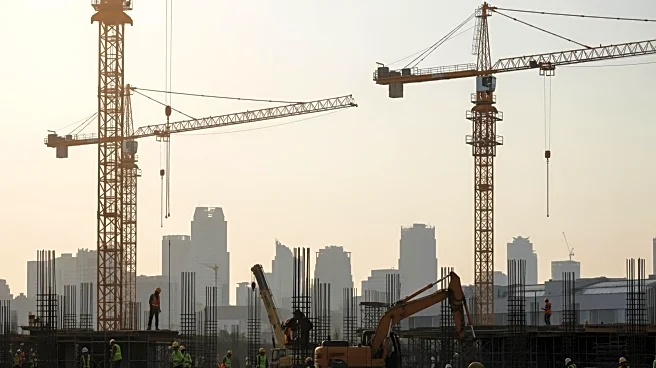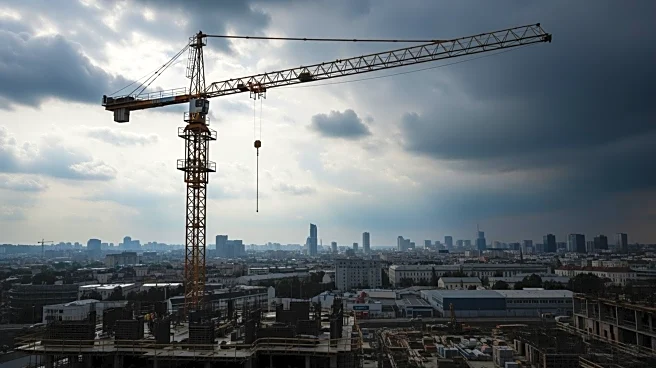What's Happening?
The construction industry is grappling with the effects of stagflation, a combination of stagnant economic growth and persistent inflation. This situation is creating a challenging environment for construction firms, which are already operating on tight
margins. Demand is being held back by weak growth, while costs remain high due to supply-side pressures. The private residential sector is particularly affected, with high interest rates, regulatory delays, and subdued household incomes impacting viability. Despite a slowdown in materials inflation from its 2022 peak, prices remain elevated, further squeezing margins. Contractors face the risk of insolvency as tender price increases lag behind rising input costs. The industry is encouraged to adopt disciplined forecasting and stress-test budgets to build resilience.
Why It's Important?
Stagflation presents a unique challenge to the construction industry, as it removes the usual counterbalance of lower costs during economic downturns. This environment intensifies existing pressures and disparities, potentially leading to increased insolvencies and cautious tendering behavior. The industry's response to these challenges will be crucial in determining its resilience and ability to maintain market share. Firms that manage risk effectively, engage in transparent communication with clients, and focus on long-term resilience may emerge stronger. The broader economic implications include potential impacts on employment, investment, and regional economic activity, highlighting the importance of strategic planning and collaboration within the sector.
What's Next?
The coming months will be shaped by the Autumn Budget and the industry's response to stagflation. Construction firms are advised to approach risk with discipline, rely on data-driven decision-making, and maintain open dialogue with clients. Exploring models that distribute risk more evenly and balancing workloads across sectors and regions can help avoid overexposure. The industry's ability to adapt to these challenges will be critical in sustaining relationships and margins. As conditions improve, firms that have built resilience may gain competitive advantage and market share.
Beyond the Headlines
Stagflation in the construction industry highlights deeper issues such as the need for transparency, collaboration, and realistic planning. Ethical considerations include fair risk distribution and maintaining workforce capacity. Long-term shifts may involve changes in tendering behavior and investment strategies, as firms seek to navigate the challenging economic landscape. The industry's response could influence broader economic recovery and stability, emphasizing the importance of strategic foresight and adaptability.













